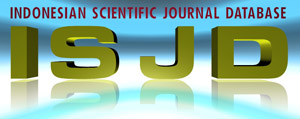Within-Community Conflict on Mining Policy: Assessing Implication in Rural Indonesia
DOI:
https://doi.org/10.23887/jish.v12i2.44769Keywords:
Mining Policy, Development Policy, Mining Conflict, Policy Argumentation, Rural CommunityAbstract
The case of Kendeng, Rembang regency, Central Java, due to the expansion of cement factory buildings in Tuban and Gresik East Java, has led to conflict not only between the community and policymakers but also between community members. This paper discusses the fragmentation in the community by mapping argumentation behind pro and contra the policy. Based on research during 2018-2019, applying desk study, interviews, and direct observation, this paper identifies that the conflict has led to the social grouping into pro-, anti-cement, and neutral people, which impacted the daily social life of the community. The grouping has created tension in daily social relationships, creating fragmentation among the village community members. The case allows us to reflect more on the need for the policy to be aware of the social impact of a development policy within the community; moreover, for rural communities, the neighborhood is a crucial institution for them.
References
Aspinall, E. (2017). The Construction of Grievance: Natural Resources and Identity in a Separatist Conflict. Journal of Conflict Resolution, 51(6), 950–972. https://doi.org/10.1177/0022002707307120
Banks, G. (2008). Understanding “resource” conflicts in Papua New Guinea. Asia Pacific Viewpoint, 49(1), 23–34. https://doi.org/10.1111/j.1467-8373.2008.00358.x
Basedau, M., & Roy, V. (2020). Sleep, bark, or bite: Do natural resources make the difference regarding peaceful or violent conflict? International Area Studies Review, 23(1), 73–92. https://doi.org/10.1177/2233865919895859
Crost, B., & Felter, J. H. (2020). Extractive resource policy and civil conflict: Evidence from mining reform in the Philippines. Journal of Development Economics, 144, 0–52. https://doi.org/10.1016/j.jdeveco.2020.102443
Durkheim, E. (1984). On the Division of Labor in Society. Zeitschrift für Sozialforschung (Vol. 3). London: Macmillan.
Faruque, M. O. (2018). Mining and subaltern politics: political struggle against neoliberal development in Bangladesh. Asian Journal of Political Science, 26(1), 65–86. https://doi.org/10.1080/02185377.2017.1384928
Gallemore, C. T., Harianson, R. D. P., & Moeliono, M. (2014). Discursive barriers and cross-scale forest governance in central Kalimantan, Indonesia. Ecology and Society, 19(2). https://doi.org/10.5751/ES-06418-190218
Hilhorst, D. (2003). The Real World of NGOs: Discourses, diversity and development. Zed Books. London: Zed Books. Retrieved from http://books.google.co.uk/books/about/The_real_world_of_NGOs.html?id=kRAFAQAAIAAJ&pgis=1
Horowitz, L. S. (2009). Environmental violence and crises of legitimacy in New Caledonia. Political Geography, 28(4), 248–258. https://doi.org/10.1016/j.polgeo.2009.07.001
Karim, D. B. (2012). Whose development? The Need for Conflict-Sensitive Development in Papua, Indonesia. Journal of Peacebuilding & Development, 7(1), 95–100. https://doi.org/10.1080/15423166.2012.719407
Lavaux, S. (2016). Natural resources and conflict in Colombia, 62(1), 19–30.
Lujala, Paivi. (2009). Deadly combat over natural resources: Gems, petroleum, drugs, and the severity of armed civil conflict. Journal of Conflict Resolution, 53(1), 50–71. https://doi.org/10.1177/0022002708327644
Lujala, Päivi, Gleditsch, N. P., & Gilmore, E. (2005). A diamond curse? Civil war and a lootable resource. Journal of Conflict Resolution, 49(4), 538–562. https://doi.org/10.1177/0022002705277548
Ross, M. (2006). A closer look at oil, diamonds, and civil war. Annual Review of Political Science, 9, 265–300. https://doi.org/10.1146/annurev.polisci.9.081304.161338
Ross, M. L. (2003). Oil, drugs, and diamonds: How do natural resources vary in their impact on civil war. In K. Ballentine & J. Sherman (Eds.), The political economy of armed conflict: Beyond greed … (pp. 47–67). London: Lynne Rienner Publsher. Retrieved from http://www.libertyparkusafd.org/Hale/Special Reports%5CNatural Resource Wars%5COil Drugsand Diamonds -- Resource Wars.pdf
Ross, M. L. (2015). What have we learned about the resource curse? Annual Review of Political Science, 18, 239–259. https://doi.org/10.1146/annurev-polisci-052213-040359
Taabazuing, J., Luginaah, I., Djietror, G., & Otiso, K. M. (2012). Mining, conflicts and livelihood struggles in a dysfunctional policy environment: The case of Wassa West District, Ghana. African Geographical Review, 31(1), 33–49. https://doi.org/10.1080/19376812.2012.690089
Tönnies, F. (2001). Community and Civil Society. Cambridge: Cambridge University Press.
Welker, M. (2014). Enacting the corporation: An American mining firm in post-authoritarian Indonesia. Enacting the Corporation: An American Mining Firm in Post-Authoritarian Indonesia. Berkeley: University of California Press.
Downloads
Published
Issue
Section
License
Copyright (c) 2023 Laila Kholid Alfirdaus, Teguh Yuwono, Dzunuwwanus Ghulam Manar

This work is licensed under a Creative Commons Attribution-ShareAlike 4.0 International License.
Authors who publish with the Jurnal Ilmu Sosial dan Humaniora agree to the following terms:
- Authors retain copyright and grant the journal the right of first publication with the work simultaneously licensed under a Creative Commons Attribution License (CC BY-SA 4.0) that allows others to share the work with an acknowledgment of the work's authorship and initial publication in this journal.
- Authors are able to enter into separate, additional contractual arrangements for the non-exclusive distribution of the journal's published version of the work (e.g., post it to an institutional repository or publish it in a book), with an acknowledgment of its initial publication in this journal.
- Authors are permitted and encouraged to post their work online (e.g., in institutional repositories or on their website) prior to and during the submission process, as it can lead to productive exchanges, as well as earlier and greater citation of published work. (See The Effect of Open Access)


.png)
.png)













